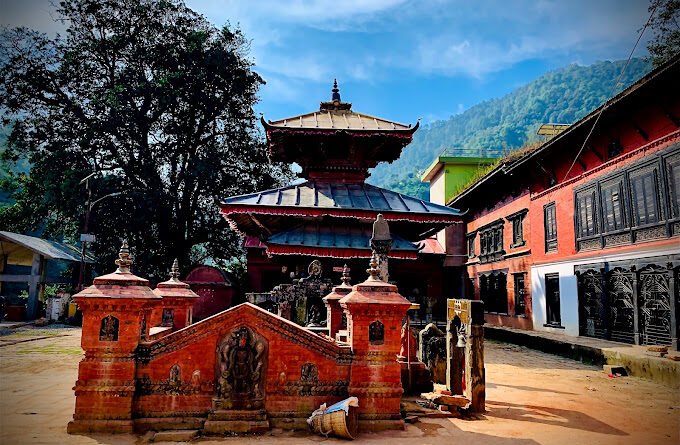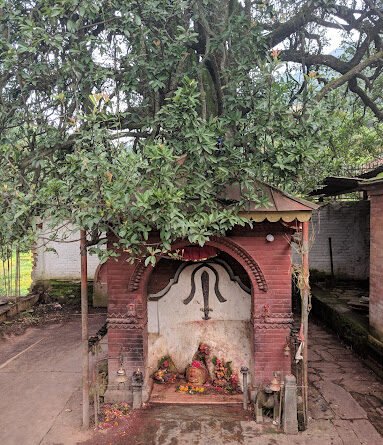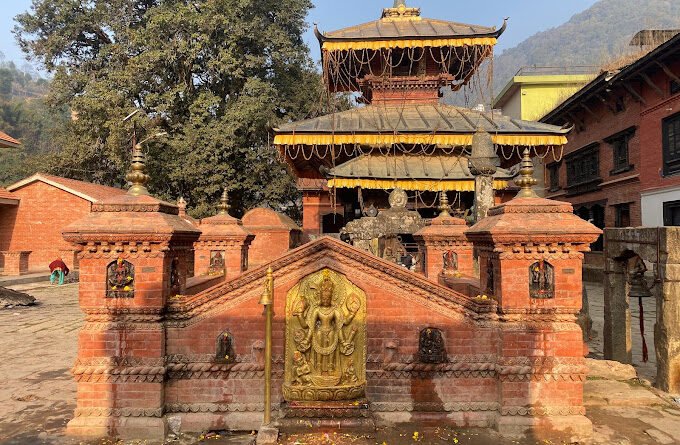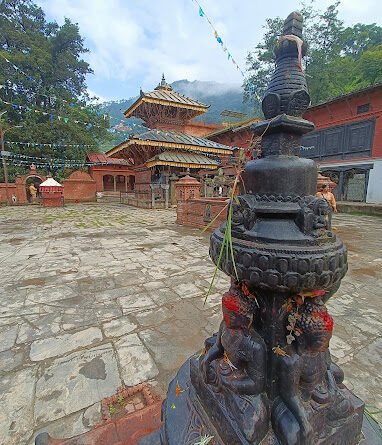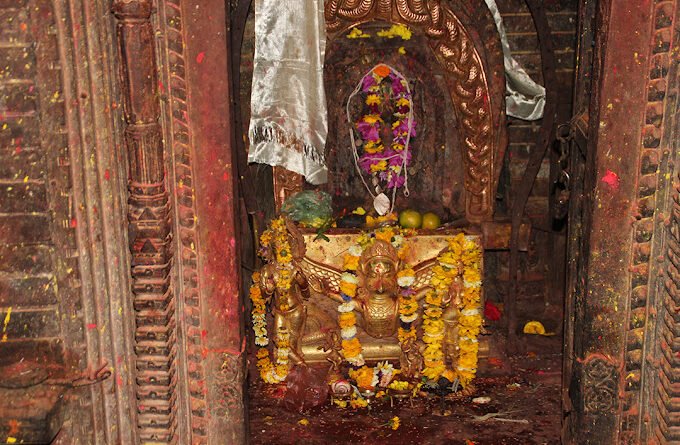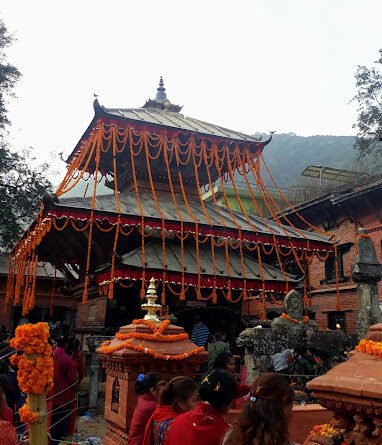Inchangunarayan Temple Nagarjun Nepal
Ichangu Narayan Temple is a 5th-century Hindu temple located in Kathmandu, Nepal. It is one of the four major Narayan (chaar Narayan) temples of Kathmandu valley alongside Changu Narayan, Bisankhu Narayan and Sheshnarayan. It was built by King Haridutta of the Lichhavi dynasty.
The temple was rebuilt in the 18th century.The temple has two stories and has a pogoda architecture. The courtyard of the temple houses statues of various Hindu deities such as Garudas and Mahalaxmi. The idols were stolen from the temple several times, but they were recovered.
The Ichangu Narayan temple is dedicated to Lord Vishnu and it is one of the four ‘Narayan temples’ (Narayan is one of the incarnations of Vishnu ~ the eternal man) of the Kathmandu Valley; the others are Changu Narayan in Bhaktapur, Bisankhu Narayan in Godawari, and Shesh Narayan in Dakshinkali. All these four temples were built to protect the valley against evil spirits.
Ichangu Narayan dates back to the 5th century. However, the current two-roofed pagoda style temple was built in the 18th century on the site of the previous temple built in 1512.
Ichangu Narayan is an extraordinary pilgrimage site as it is believed that Ichangu was buried for a long time under debris and was uncovered by a devotee after the temple appeared in his dream. Some believe that the temple was built in the 5th century during the reign of King Haridatta (Lichhavi dynasty) while others think that Ichangu Narayan temple dates back to 16th century. The temple as we know it today was built in the 18th century on the foundations of the former temple.
Inchangunarayan temple in Nagarjun municipality of Kathmandu. This temple is about 4 km west of Swayambhu. The temple of Ichangunarayan is in the style of a pagoda. In front of the temple, there is a statue of Narayan. It looks like a stone fountain, but inside it is a sleeping statue of Narayan. There are bells, statues of Hanuman, statues of Ganesh, statues of various deities as well as inscriptions. The temple is very much decorated with woodwork including Tudal. Inside the womb of the temple stands a statue of Lord Narayan, with conch shells, a mace and a lotus in his four hands, and is surrounded by seven snakes. There is an Garud (A kind of holy bird) on the pillar in front of the temple. There are many inscriptions in this temple complex which describe the antiquity and the temple. There is a small hole above this inscription where devotees even worship.
According to the Gopalraj genealogy, the Narayan idol was built by King Haridatta Burma as a symbol of his wish for victory. Also, this temple was established by Haridatta Burma in 320 BC. One of the inscriptions here is an ancient temple built long before 1257 BC. On the day of Haribodhani Ekadashi, when the four Narayans are circumambulated, the devotees also circumambulate these Narayans. A fair is also held here in the month of October. King Haridatta Burma of the Lichhavi period established four Narayan Changunarayanas, Ichangunarayanas, Bishankhunarayanas and Sheshnarayanas around the 4th century BC and established a tradition of holding fairs throughout the month of Kattik. Like the famous four dhams of India, Badri, Jagannath, Kedarkanath and Rameshwar Dham, it seems that the four Narayanas were established. According to King Pran Malla, when the floods came due to heavy rains and these Narayans were disappearing, Sivananda Rajopadhyaya, a Sahasra of Indra Chowk, found them in Bishnumati and established them in the former front and also performed his Diwali here. It is said that his descendants are still the priests of this temple.











